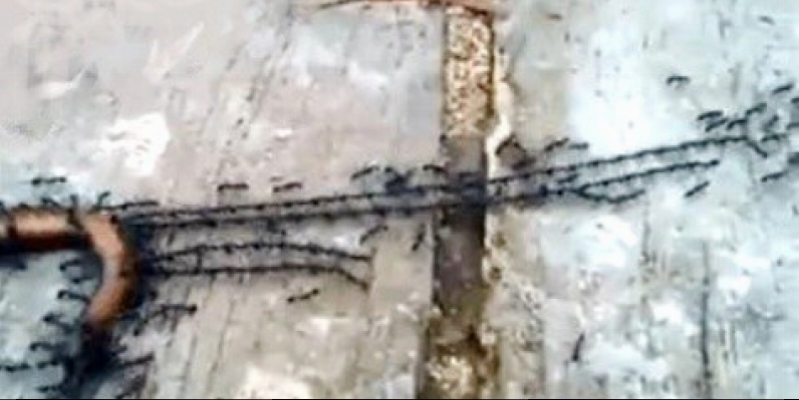Until now it was known that ants are very communal. In addition to lifting heavy loads, they are able to unanimously defend their nests from predators. But this time it was recorded, as this is a live body stropuolės chain that Strained compared with them a hundred times larger centipede.
The recently publicized footage shows how the ant species in subtropical latitudes - Leptogenys burden for transportation connects your body to form a human chain. This insect behavior researchers have been looking for the first time and trying to explain it.
University of Colorado student Helen McCreery recently announced the publication, which discusses the 40 tribes of insect food transport in the slot features. She studied for two little ants-bearing leaves and clusters of bats, snakes and even tree trunks shipping cases.
"For me, this insect behavior is different from what was seen in other species of ant activity. Instead, to hold the same prey, it carries Leptogenys concluded stretching the chain "- surprised McCreery.
She also pointed out that individual ants are not as smart, but working together as a colony, they can perform incredible feats, whether it be co-ordinated acid attacks pose a threat to birds, and a large piece of food through the small hole in the post.
Animals are able to work not only individually, but also in the group, biologists often call their superorganizmais. For example, Vudlendo ants collectively spread unpleasant odor (liquid form), when passed on to the impending threat of predators. As pointed out by scholars working in this way they collectively seek to defend themselves in a peaceful manner, without the fatal poison.
Another interesting aspect is that the flood threat, merged in different parts of the body, the ants form a "life raft". Yes, holding the insects floating on the surface of the water, because the bodies of engagement helps to repel water and create a partially hydrophobic surface.
Well, the video below we look at one of their group work
example - live help tensile chain giant centipede:



